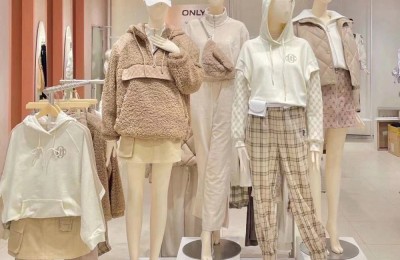Profit is the most tangible thing for manufacturers!
Profit is not only capital to show off, but also motivation to persevere!
The polyester manufacturer that once “made thousands of gold when the machine sounded” seems to have gone away since entering 2019. The high profits that it was once proud of have disappeared. No return!
In the midst of the calmness of the textile market, there were once Polyester filament, known as the “money printing machine”, is also experiencing a tepid situation. Especially after the first quarter, the profits of polyester manufacturers have been continuously compressed. It is not an exaggeration to describe it as “unsatisfactory”. Compared with the same period last year, the profit gap is quite obvious! If the upstream polyester raw materials PTA or MEG rise sharply or the prices of polyester filament products fall back, if you are not careful, you will fall into a loss situation.
“Gold-attracting King” FDY, the profit is only 200-400 yuan/ton!
As the former “King of Money Attractors”, FDY’s overall profit level was quite remarkable from January to April this year, and it was also at a relatively high level among various products. leading position. However, since May, it has experienced weakening profits and even fell into a loss situation. The situation is not optimistic. In the near future, FDY manufacturers can basically maintain a small profit state, and the current profit margin is hovering around 200-400 yuan/ton.
Turn losses into profits, POY profit gap is obvious year-on-year!
As a product with high production capacity concentration, POY has fallen into a quagmire of losses since the fourth quarter of last year, and this round of decline spread to the first quarter of this year; It was not until April that the company was able to turn losses into profits when its own prices rebounded. Judging from the past two months, although prices are still sluggish, POY has finally been able to maintain profitability, and its profit margin has been promoted to the “first place” among all products; of course, year-on-year, this gap is still quite obvious.
DTY profits are hard to describe, and the pressure on texturing factories has doubled!
In fact, for all polyester products, the profit performance of DTY products this year is particularly unsatisfactory, and the cash flow pressure of texturing manufacturers is self-evident. It can be seen from the data calculation of China Silk City Network that since the beginning of this year, all DTY products have been basically hovering on the edge of losses, which also means that most texturing manufacturers are suffering from loss pressure. In the near future, with the loosening of upstream costs, DTY product profits have recovered, but the profit margin is still small.
In the first few months of this year, the profit performance of the polyester filament market was not very satisfactory, which can be explained by the fact that the profit margins were swallowed up by PTA. After all, PTA profits are definitely “leading” in the entire polyester industry chain. . However, with the profit taking of PTA in recent months, although the profits of various polyester filament products have improved, the high profit status of the past is still difficult to match.
1. Polyester filament prices remain low
Is the product profitable? What is the profit margin? In addition to cost factors, in fact, the most critical thing still depends on its own price! Since the beginning of this year, the price focus of various polyester filament products has been basically at a low level, and it is difficult to make a major upward breakthrough; in terms of recent prices, it is also at a low level during the year, and naturally it is difficult to increase its own profit margins.
In terms of specific prices, as of September 10, the mainstream average price of FDY150D was concentrated at 8,000 yuan/ton. Compared with the price in the same period last year, it dropped significantly by nearly 4,350 yuan/ton, a decrease of 35.22%. Similarly, the price of POY150D dropped sharply to 7,720 yuan/ton, a drop of 36.98%. DTY150D also fell below the 10,000 yuan mark, and now the price has plummeted to 9,200 yuan/ton, a drop of nearly 32.35%.
2. The operating rate of polyester manufacturers is at a high level
Since the beginning of this year, the operating rate of the polyester filament industry has remained at a high level. The extent of equipment maintenance by manufacturers is generally low, which also means that it is difficult to increase the price focus from the supply side. According to statistics, the current operating rate of melt direct spinning polyester filament is concentrated at 88.60%, the operating rate of chip spinning polyester filament is around 59%-61%; and there is basically no large-scale production reduction and maintenance in the short term. It is reported that a new polyester device was put into operation in the fourth quarter, which may further increase the operating load, and the polyester filament industry may further increase its operating load.
3. The destocking of the polyester market is not obvious
The last thing I have to mention is the polyester manufacturers high inventory status. According to the statistics of China Silk City Network, the overall inventory of the polyester market is now 12-21 days; in terms of specific products, POY inventory is 4-8 days, FDY inventory is around 11-16 days, and DTY inventory is 12-21 days. About 19-24 days. Compared with the same period last year, the inventory pressure of polyester manufacturers is generally higher.
The overall destocking of the polyester market this year has not been ideal. Although it has entered September, terminal order demand has not improved significantly. In addition, the polyester industry is at a high level. , in the absence of demand guidance, it may still be difficult for polyester manufacturers to achieve a major breakthrough in destocking.
In the final analysis, whether each polyester product is profitable or not depends on its own price and the impact of supply and demand. Ultimately, it is still expected that orders in the downstream market during the “Golden Nine and Silver Ten” will improve, demand will increase, raw material procurement will be strengthened, inventories will decrease, and production and sales will rebound, in order to increase price-driven profit margins. </p






